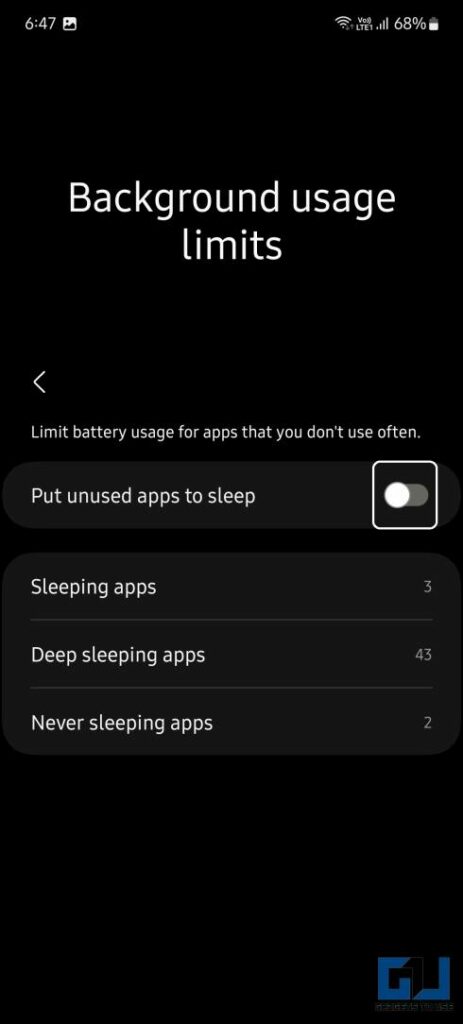Unlocking your phone's full potential can be as simple as understanding how to manage app functionalities effectively. Many users find their devices underperforming or apps not functioning correctly due to settings like deep sleep that limit background activity. By learning how to control these features, you can ensure smoother performance and better battery life.
Whether you're dealing with a Ford vehicle entering deep sleep mode or managing apps on a Galaxy device, the principles remain similar. It’s all about optimizing settings to align with your usage needs. In this article, we’ll explore various aspects of deep sleep modes in different contexts and provide actionable tips to enhance your device's efficiency.
Understanding Deep Sleep Modes in Vehicles
Modern vehicles, such as those manufactured by Ford, often come equipped with advanced technology designed to conserve power when not in use. This includes entering a deep sleep mode after being inactive for an extended period. During this state, certain systems may temporarily shut down to preserve energy, which could lead to delays in reconnecting to services like the FordPass App.
If you notice it takes longer than usual for your modem to reconnect—typically around 20-30 seconds—this is likely due to the vehicle transitioning from its deep sleep mode. While inconvenient at times, this feature helps extend battery life and ensures optimal performance during actual driving sessions.
In case you encounter issues where your car won't start despite having sufficient charge, consider reaching out to Roadside Assistance for further guidance. They can assist in diagnosing whether the problem stems from the deep sleep function or another underlying issue within your automobile's electrical system.
Managing Background Apps on Samsung Devices
Samsung Galaxy devices offer users the ability to control which applications run in the background through their 'sleeping apps' feature. By putting unused apps into sleep mode, you can reduce unnecessary resource consumption while extending battery life. However, doing so might also prevent important notifications from coming through if improperly configured.
To remove specific apps from sleeping status, navigate to the application manager via settings. From there, locate more options represented by three vertical dots and choose 'Remove Apps.' Afterward, select the desired apps you wish to delete or awaken from sleep mode before confirming your selection with the 'Remove' button.
A common mistake made by users involves placing essential apps into deep sleep without realizing the implications. For instance, setting notification-based apps to deep sleep would result in missed alerts. Therefore, always review what functions each app performs before altering its operational parameters.
Enhancing Sleep Quality Through Technology
Technology has found its way into improving personal wellness areas, including sleep hygiene. Applications such as White Noise Deep Sleep Sounds aim to create conducive environments for restful slumber using natural soundscapes tailored to individual preferences. With over 250 calming sounds available, users can select ones most effective for drowning out disruptive noises like traffic outside their homes.
Another notable mention is the Deep Sleep with Andrew Johnson app, designed specifically to combat insomnia caused by stress or anxiety. Utilizing guided meditations and relaxation techniques, this tool assists individuals in achieving deeper levels of tranquility necessary for quality sleep cycles.
For travelers seeking consistent good nights regardless of location changes, incorporating specialized tools mentioned above proves invaluable. These resources cater not only to adults but also infants who require soothing melodies to drift off peacefully. Thus proving beneficial across diverse demographic groups striving towards healthier lifestyles centered around adequate rest.
Troubleshooting Deep Sleep Settings on Android
Occasionally, users face challenges related to managing deep sleep settings on Android devices, particularly concerning missed notifications. If you've inadvertently placed critical apps into deep sleep mode, fear not; reversing this action requires accessing relevant configurations within your device's settings menu.
Begin by navigating to sleeping apps settings, followed by selecting deep sleeping apps individually or collectively depending upon preference. Once selected, utilize the option provided to wake them up from their dormant state thereby restoring normal functionality including receiving timely updates.
Additionally, ensure that permissions management policies aren't restricting vital operations performed by frequently used apps. Disabling automatic removal of permissions for seldom-used software prevents accidental interference with core functionalities required daily. Adjustments here contribute significantly toward maintaining seamless user experiences devoid of interruptions stemming from improper configuration choices earlier made.

